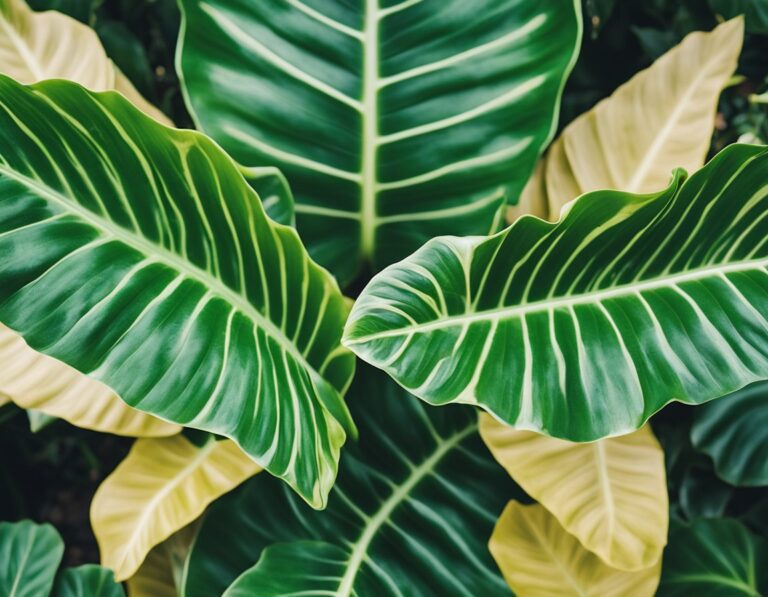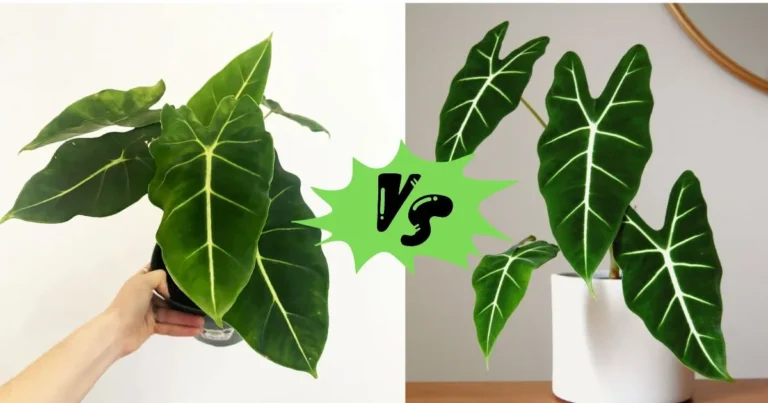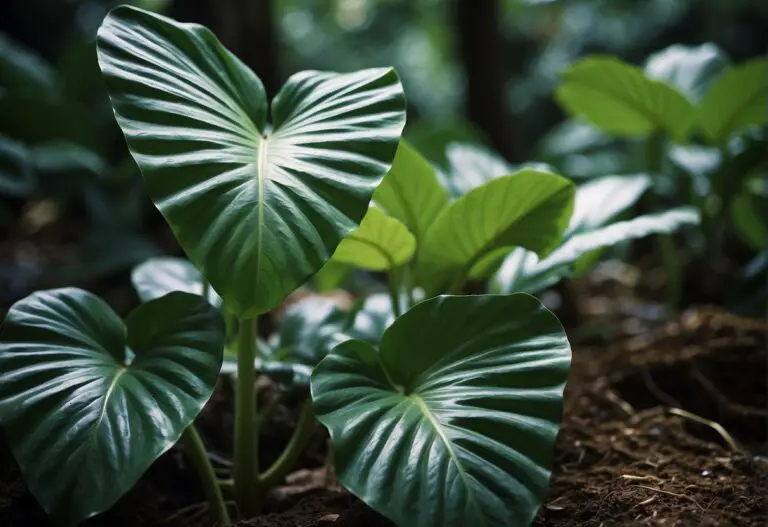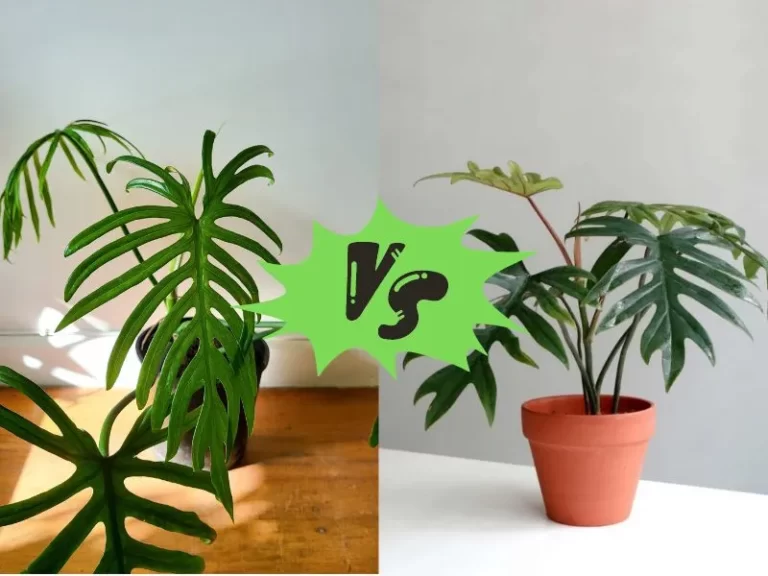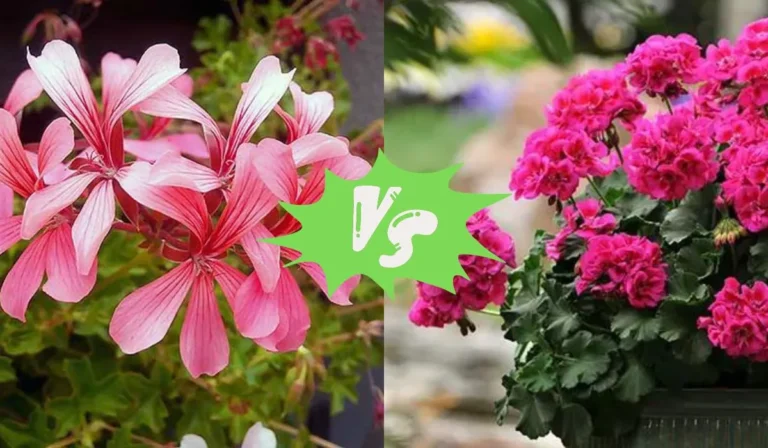Philodendron Imperial Red vs Black Cardinal: A Friendly Comparison
Philodendrons, known for their low-maintenance nature and varied appearances, are popular indoor plants. This article focuses on two widely admired varieties: Philodendron Imperial Red and Black Cardinal, exploring their unique characteristics and differences.
Philodendron Imperial Red, a hybrid of Philodendron erubescens and Philodendron lacerum, stands out with striking red leaves, making it a sought-after choice for indoor gardens. In contrast, Philodendron Black Cardinal, a cultivar of Philodendron erubescens, features deep red to brown leaves that gradually transform into blackish-green or dark brown.

A comparative analysis reveals distinctions between these two varieties. While both boast red leaves, Philodendron Imperial Red has elongated, lighter green leaves, reaching a height of 3 ft (1 m), whereas Philodendron Black Cardinal showcases wider, darker green leaves, growing up to 4 ft (1.2 m) tall. Additionally, Imperial Red generally has a smaller overall size compared to Black Cardinal.
Cultivating and propagating these plants is straightforward, as they thrive in bright, indirect light with well-draining soil and require regular but not excessive watering. Propagation methods include stem cuttings or division. With proper care, both Philodendron Imperial Red and Black Cardinal can flourish indoors, adding a touch of vibrant greenery to your home.
Key Takeaways
- Philodendron Imperial Red and Black Cardinal are two popular Philodendron varieties that have striking red leaves.
- While both plants have red leaves, they differ in leaf shape and overall plant size.
- Both plants prefer bright but indirect light, well-draining soil, and regular watering for proper care.
Understanding Philodendron Varieties

History of Philodendron Breeding
Philodendrons are tropical plants that belong to the Araceae family. These plants are native to the rainforests of Central and South America. The name “philodendron” comes from the Greek words “philo” meaning love and “dendron” meaning tree. Philodendrons have been cultivated for centuries, with the first recorded instance of breeding taking place in the 16th century.
Over the years, breeders have developed many different varieties of philodendrons. Some of the most popular varieties include the Imperial Red and Black Cardinal. These varieties are known for their unique features, such as their dark, glossy leaves and striking colors.
Characteristics of Philodendron Plants
Philodendrons are known for their easy care and ability to thrive in a variety of environments. These plants can be grown in soil or water and can tolerate low light conditions. Philodendrons are also excellent air purifiers, making them a popular choice for offices and homes.
Here are some key characteristics of philodendron plants:
- Leaves: Philodendrons have large, glossy leaves that come in a variety of shapes and colors. Some varieties, such as the Imperial Red and Black Cardinal, have striking red or black leaves.
- Growth habits: Philodendrons can grow as vines or upright plants. Some varieties, such as the Split-Leaf Philodendron, can grow to be quite large.
- Light requirements: Philodendrons can tolerate low light conditions, but they prefer bright, indirect light.
- Watering: Philodendrons prefer to be kept moist but not waterlogged. Allow the soil to dry out slightly between waterings.
- Soil: Philodendrons prefer well-draining soil that is rich in organic matter.
- Propagation: Philodendrons can be propagated through stem cuttings or by dividing the root ball.
Philodendron Imperial Red

Philodendron Imperial Red is a beautiful and variegated plant that is a cultivar of the Philodendron Erubescens. It is a popular houseplant that is loved for its colorful leaves and easy-to-care-for nature.
In this section, we will discuss the visual characteristics, growth patterns, and care requirements of the Philodendron Imperial Red.
Visual Characteristics
The Philodendron Imperial Red has large, glossy, heart-shaped leaves that are a deep red color. The leaves are typically 8-10 inches long and 5-7 inches wide. The new leaves are bright red and gradually turn to a deep green as they mature. The stems of the plant are also red, which adds to its stunning appearance.
Growth Patterns
The Philodendron Imperial Red is a relatively fast-growing plant that can reach heights of up to 3 feet. It is a climbing plant that will grow up a moss pole or other support structure. It is important to note that the plant can be toxic if ingested, so keep it away from pets and children.
Care Requirements
The Philodendron Imperial Red is an easy-to-care-for plant that is perfect for beginners. Here are some care tips to keep your plant healthy and thriving:
- Light: The Philodendron Imperial Red prefers bright, indirect light. Avoid direct sunlight, as it can burn the leaves.
- Water: Water your plant when the top inch of soil feels dry to the touch. Be sure not to overwater, as this can lead to root rot.
- Soil: Use a well-draining soil mix that is rich in organic matter.
- Fertilizer: Fertilize your plant once a month during the growing season with a balanced fertilizer.
- Temperature: The Philodendron Imperial Red prefers temperatures between 65-80°F (18-27°C).
Philodendron Black Cardinal
If you’re looking for a plant that will add a touch of drama to your indoor garden, the Philodendron Black Cardinal is an excellent choice.
This plant has broad, color-changing leaves that transform from burgundy to green to black as it matures. In this section, we’ll take a closer look at the distinct features, developmental stages, and maintenance tips for this striking plant.
Distinct Features
The Philodendron Black Cardinal is a hybrid variety of the Philodendron genus. One of the most distinctive features of this plant is its leaves. As mentioned before, the leaves start out burgundy and then gradually turn green and then black as they mature. The leaves are also broad and glossy, with a heart-shaped base.
Another notable feature of the Philodendron Black Cardinal is its ability to purify the air. This plant is an excellent natural air purifier, making it perfect for your home or office.
Developmental Stages
Like most plants, the Philodendron Black Cardinal goes through several developmental stages. When you first bring the plant home, it will likely be in its juvenile stage. During this stage, the leaves will be smaller and more rounded than they will be when the plant is fully mature.
As the plant grows, it will enter its adult stage. During this stage, the leaves will become broader and more elongated. This is also when the leaves will start to change color, gradually transitioning from burgundy to green to black.
Maintenance Tips
Taking care of a Philodendron Black Cardinal is relatively easy, but there are a few things you should keep in mind. Here are some maintenance tips to help keep your plant healthy and happy:
- Light: The Philodendron Black Cardinal prefers bright, indirect light. Avoid placing it in direct sunlight, as this can scorch the leaves.
- Water: Keep the soil moist but not waterlogged. Water the plant when the top inch of soil feels dry to the touch.
- Soil: Use a well-draining soil mix that retains moisture. Avoid sandy potting mixes, as these can dry out too quickly.
- Fertilizer: Philodendron Black Cardinal benefits from regular fertilization during the growing season. Use a balanced, water-soluble fertilizer once a month.
- Pruning: Prune the plant as needed to maintain its shape and size. Use clean, sharp pruning shears to avoid damaging the plant.
By following these maintenance tips, you can help ensure that your Philodendron Black Cardinal stays healthy and vibrant for years to come.
Comparative Analysis
If you’re looking for a Philodendron plant to add to your indoor garden, you might be wondering about the differences between the Imperial Red and Black Cardinal varieties.
Both plants are popular choices among indoor gardeners due to their stunning appearance and ease of care. Here’s a comparative analysis of these two plants to help you decide which one is right for you.
Color and Texture Comparison
One of the most noticeable differences between the Imperial Red and Black Cardinal is their color.
The Imperial Red has large, glossy, deep red or burgundy leaves that transition to green as they mature, while the Black Cardinal has dark, almost black leaves with a velvety texture. Both plants have a striking appearance and can add a pop of color to any room.
Size and Shape Differences
The size and shape of the leaves are another way to differentiate between these two plants. The Imperial Red has larger leaves that can grow up to 12 inches long and 8 inches wide, while the Black Cardinal has smaller leaves that grow up to 8 inches long and 6 inches wide.
The leaves of the Black Cardinal are also more heart-shaped, while the leaves of the Imperial Red are more elongated.
Environmental Adaptability
When it comes to environmental adaptability, both plants are relatively easy to care for. They prefer bright, indirect light and well-draining soil. However, the Black Cardinal is more tolerant of lower light conditions than the Imperial Red. The Black Cardinal can also handle a wider range of temperatures, making it a great choice for those who live in colder climates.
Cultivation and Propagation
Growing Philodendron Imperial Red or Black Cardinal is relatively easy, even for novice gardeners. These plants can be grown both indoors and outdoors, but they thrive best in warm and humid environments. In this section, we will discuss some key factors to consider when cultivating and propagating these two plants.
Soil and Potting Mix
The soil and potting mix play a crucial role in the growth and development of Philodendron plants. For both Imperial Red and Black Cardinal, it is recommended to use a well-draining soil mix that retains moisture but does not become waterlogged. A mix of peat moss, perlite, and vermiculite is ideal for these plants.
When potting your Philodendron, choose a container that is slightly larger than the root ball. Make sure the pot has drainage holes to prevent waterlogging. You can also add a layer of rocks or gravel at the bottom of the pot to improve drainage.
Propagation Techniques
Philodendrons can be propagated through stem cuttings or by division. Stem cuttings are the most common method, and they are relatively easy to propagate. Cut a stem with a few leaves from the parent plant, and place it in a jar of water or directly in soil. Keep the soil moist and in a warm, bright location until roots develop.
Division is another propagation method that involves separating the parent plant into smaller sections. Gently remove the plant from its pot, and carefully separate the root ball into sections. Plant each section in its own container with fresh soil.
Common Pests and Diseases
Philodendrons are susceptible to a few pests and diseases, but they are relatively easy to prevent and treat. The most common pests include spider mites, mealybugs, and scale insects. Regularly inspect your plants for signs of infestation, and treat them with an insecticide or neem oil if necessary.
The most common diseases that affect Philodendrons are root rot and leaf spot. These diseases are usually caused by overwatering or poor drainage. To prevent these diseases, make sure your soil is well-draining and do not water your plants excessively.
By following these cultivation and propagation tips, you can successfully grow and propagate Philodendron Imperial Red and Black Cardinal. Remember to keep your plants in a warm, bright location and to water them only when the soil is dry to the touch. With proper care, your Philodendrons will thrive and add a touch of tropical beauty to your home or garden.
Frequently Asked Questions
How can I differentiate between an Imperial Red and a Black Cardinal Philodendron?
Philodendron Imperial Red and Black Cardinal have similarities in appearance, but there are some differences.
The Imperial Red has leaves that are more elongated and pointed, while the Black Cardinal has leaves that are more rounded. The color of the leaves is also different. The Imperial Red has a bright red color, while the Black Cardinal has a dark burgundy color.
What are the ideal light requirements for growing a Philodendron Imperial Red?
Philodendron Imperial Red thrives in bright, indirect light. Direct sunlight can scorch the leaves, so it’s best to place it near a window with filtered light or in a partially shaded area.
Is the Philodendron Black Cardinal considered a rare variety?
Yes, the Philodendron Black Cardinal is considered a rare variety due to its unique color and pattern. It’s highly sought after by plant enthusiasts and can be difficult to find in nurseries or online.
Can Philodendron Imperial Red be grown outdoors successfully?
Philodendron Imperial Red is a tropical plant that prefers warm and humid conditions. It can be grown outdoors in warm climates with high humidity, but it’s best to keep it in a shaded area to protect it from direct sunlight.
What are the key care tips for maintaining a healthy Philodendron Black Cardinal?
To maintain a healthy Philodendron Black Cardinal, it’s important to keep the soil moist but not waterlogged. Water the plant when the top inch of soil feels dry to the touch. The plant also benefits from occasional misting to increase humidity. Fertilize the plant every two to three months during the growing season with a balanced fertilizer.
What is the scientific name for the Philodendron commonly known as Red Congo?
The scientific name for the Philodendron commonly known as Red Congo is Philodendron erubescens. It’s a tropical plant native to South America and is known for its striking red leaves.

